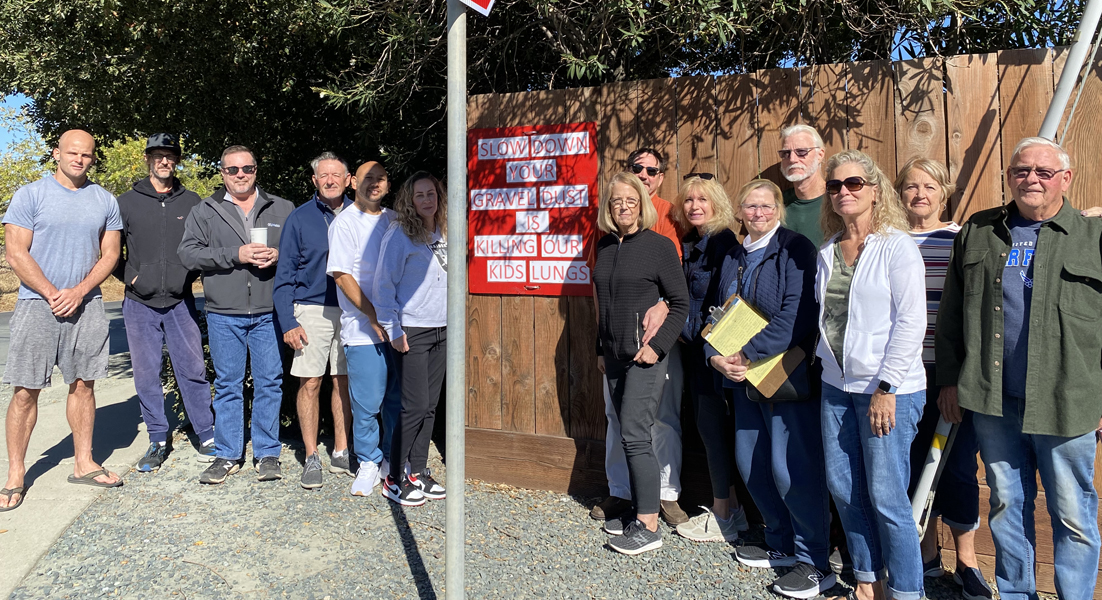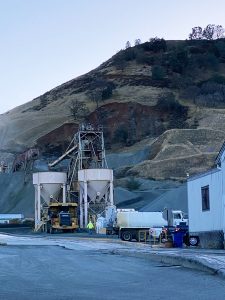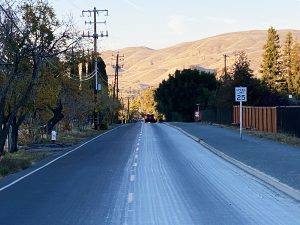Neighbors object to county approval of Clayton Quarry reclamation plan

CLAYTON, CA (Dec. 9, 2022) — The Contra Costa Planning Commission unanimously approved an amended reclamation plan for Clayton Quarry, despite neighbors’ pleas about health and safety issues.
The Sept. 28 vote includes two land-use permits that reduce the anticipated working lifespan of the quarry by 46 years, projecting that operations at the Mitchell Canyon site will cease by 2055.
Cemex’s plan replaces a 1983 agreement with the quarry’s previous owner that called for more restoration of Mt. Zion, leveling the gaping, terraced rock face, landscaping the area and eventually donating the land to Mt. Diablo State Park. The new plan removes the previous backfill requirement – leaving the hole created by the current pit mining operation and letting it fill with storm water. The company projects that 168 years after the cessation of mining, the accumulated rainwater will create a “lake.”
Contentious meeting
Already upset about the increased gravel dust and truck traffic, air and water pollution and unresponsive Cemex management, a sizeable group of near-by residents tried to persuade the county commission and other local officials to force Cemex to revise its reclamation plan to retain many of the provisions of the original agreement.
Public comment at the county meeting was limited to three minutes per person, and neighbors who voiced their concerns received an admonishment from Planning Commission Chair Kevin Van Buskirk that it was “unfair to the quarry for neighbors to speak about dust (an operations issue) at a Cemex reclamation plan meeting.”
Additionally, many neighbors say they were not notified in advance of the meeting and that Cemex did not send a representative to an earlier Clayton City Council meeting to address community concerns. After drafting a letter of support for the reclamation plan, the city of Clayton decided not to submit it.
The Pioneer made repeated attempts to reach quarry manager Todd Nixon for comment. His assistant finally informed us that all inquiries were to be handled by a communications person at Cemex corporate offices in Texas. Her response to our request to speak with a spokesperson was to send us a press release about the reclamation plan’s approval.
Use in local projects
Cemex purchased the 335-acre property in 2005. The Mexican multinational building materials company operates on four continents and is the fifth largest cement company in the world.
The quarry, which opened in 1947, is a busy site – with sometimes more than 80 trucks a day rumbling down residential Mitchell Canyon Road.
The state of California designated Mt. Zion (along with Eagle Peak, one of Mt. Diablo’s twin peaks) as a mineral reserve to be used to supply local construction needs. Most of the aggregate mined there goes to public sector projects, like Delta levees, the Los Vaqueros Dam and freeways. Half of BART’s rail ballast, the gravel bed upon which the railroad ties are laid, came from Clayton Quarry.
Neighbors work together

Frustrated Mitchell Canyon residents have been energized by what they view as the reclamation plan’s easy approval and have begun discussing next steps to protect the health and safety of their families, pets, livestock and the environment.
In an October neighborhood meeting, they acknowledged that their objections to the reclamation plan were tantamount to their growing worry about the long-term effects of exposure to quarry dust. They report an increase in respiratory problems and other disturbing health issues. Some long-term residents have moved out of the area in response to the situation.
At a lively Sunday afternoon gathering at a resident’s house, one by one they detailed their grievances. Three horses have died in the last year. Plants and trees are coated in dust, which retards photosynthesis and promotes often deadly fungal growth.
Dust-covered solar panels are losing their efficiency, and swimming pool filters are clogged. There are cracks in foundations and flooded basements. Cemex has had to pay tens of thousands of dollars in restitution for structural damage to homes in recent years.
A recent Veteran’s Day blast heard for miles was attributed to a grossly miscalculated controlled explosion. The company apologized and promised not to blast on holidays henceforth.
Residents are also concerned about runoff from the facility that ends up on their properties. Their animals are drinking the water, filled with toxic silica particles, and it is flowing into Mitchell Creek.
Annual inspections from the county

The county’s Conservation & Development Department (CDC) monitors quarry operations. CDC principal planner Francisco Avila told the Pioneer there had been an increase in neighborhood complaints in the last few years but stated that the quarry is inspected annually and that it is generally in compliance with operational guidelines.
Residents, however, report that mandated dust mitigation efforts, for instance, are conducted sporadically and inadequately. The company street sweeper is very old and often sweeps without using water, which just kicks up the dust, they say. Machinery intended to wash the wheels of the trucks before leaving the quarry is often ignored, and dusty stockpiles of gravel are not sprinkled frequently enough.
Resident demands include better street sweepers, more frequent sweeping, constant air and water quality monitoring with published data and no expansion of mining operations.
Melinda Moore has lived there since 1965 and has been working to improve quarry conditions for many years.
“We just want the quarry to be good neighbors, that’s all,” she explained. “We’re living in a million-dollar dust bowl. Something has to be done.”

Pamela Michael
Pamela Michael is a writer and communications specialist who has lived in Curry Canyon for twenty years.
